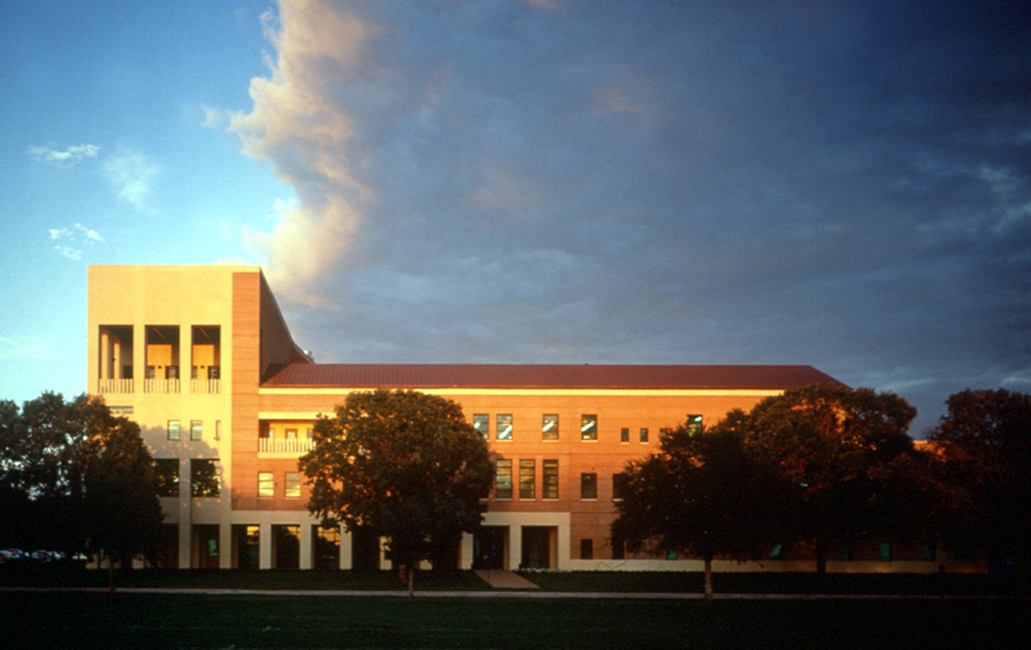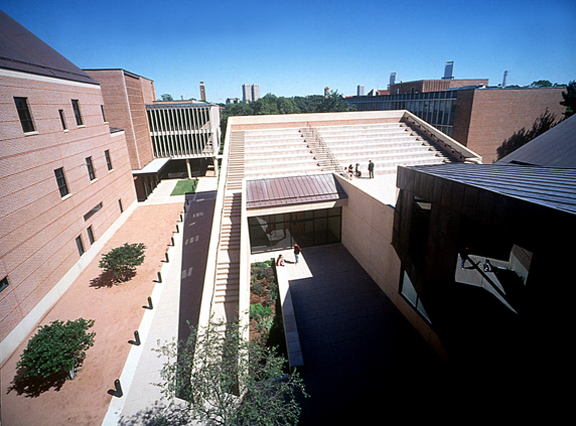
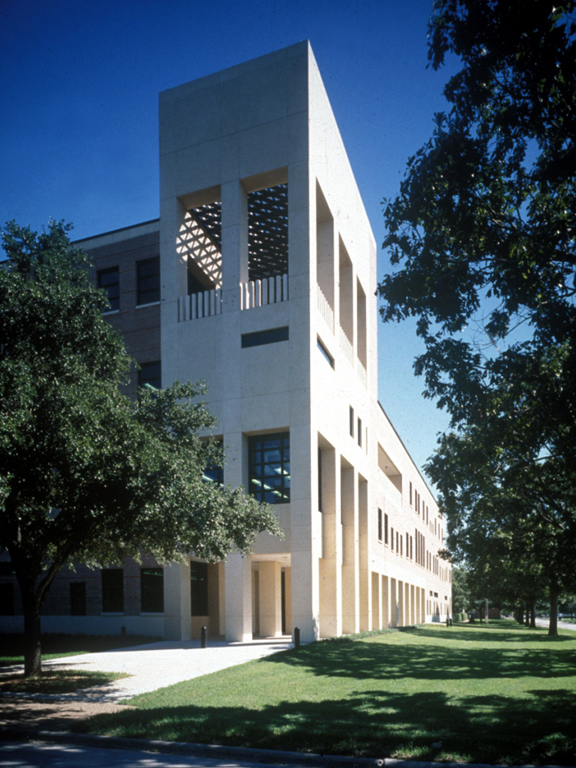
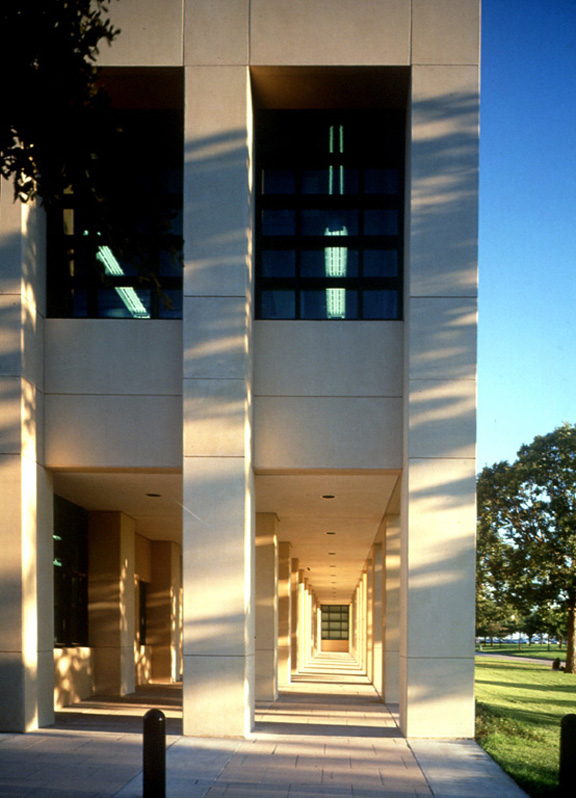
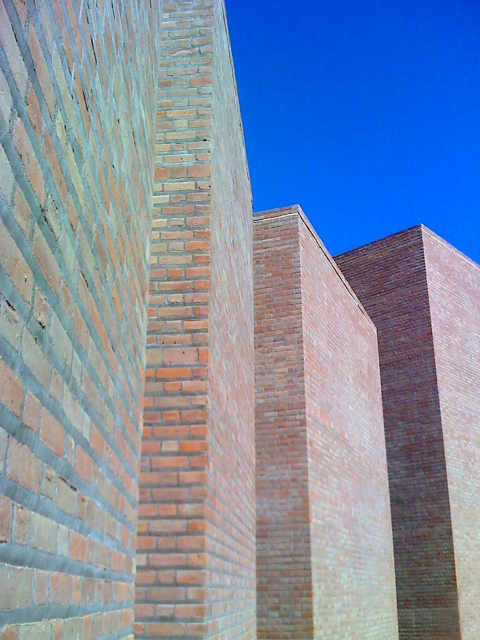
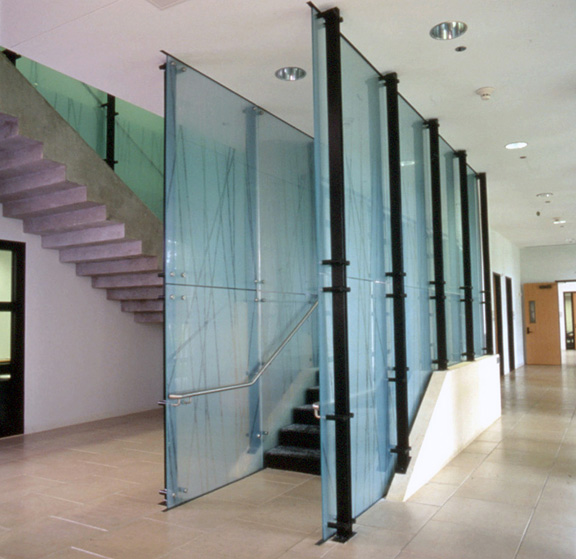
| Center
for Nanoscale Science and Technology
Rice University, Houston, Texas
1997
Situated at one of the busiest entrances
to the campus, the Rice University Chemistry/Nanotechnology Building embodies
the interaction between the traditional, formalistic architectural and
educational context of the Rice campus, and the forward-looking, dynamic
goals of the Rice Nanotechnology Initiative.
Against the backdrop of brick and limestone buildings, the Chemistry/Nanotechnology
Building creates an informal, open, and inviting facility for cutting-edge
exploration. The “exterior” of the building respects the unique
historical and physical context of the campus, while the “interior”
courtyard expresses the multi-disciplinary nature and esoteric investigations
which take place within the building. Closely nestled amidst the science
buildings of the north campus, the Chemistry/Nano-technology building
provides a spatial and temporal link between the tradition of building
on the Rice campus, and the future expansion to the west.
The inner courtyard, the private domain of the building, results from
the spiraling form of the structure, protecting the occupants from the
wind and driving Houston rain, while directing light and views into all
of the spaces. The spiraling courtyard also serves the purpose of drawing
visitors, students and faculty into the heart of the complex, the Nanotechnology
Instrumentation Facility, the home of the Initiatives most exotic hardware
and most advanced research.
Despite the stringent requirements of laboratory layout and service, the
Chemistry/Nanotechnology Building fosters interdisciplinary investigation:
circulation “nodes” provide places for colleagues to step
aside and discuss ideas; visual and sectional cuts through the building
provide views into “fishbowl” areas so that visitors and undergraduates
may see highly sophisticated equipment in use; interior and exterior gathering
spaces give a framework, not only for the social vitality of the building,
but also as an extended means for fostering and developing the necessary
interaction to keep the Nanotechnology Initiative alive.
In association with Executive Architect Brooks/Collier.
|
